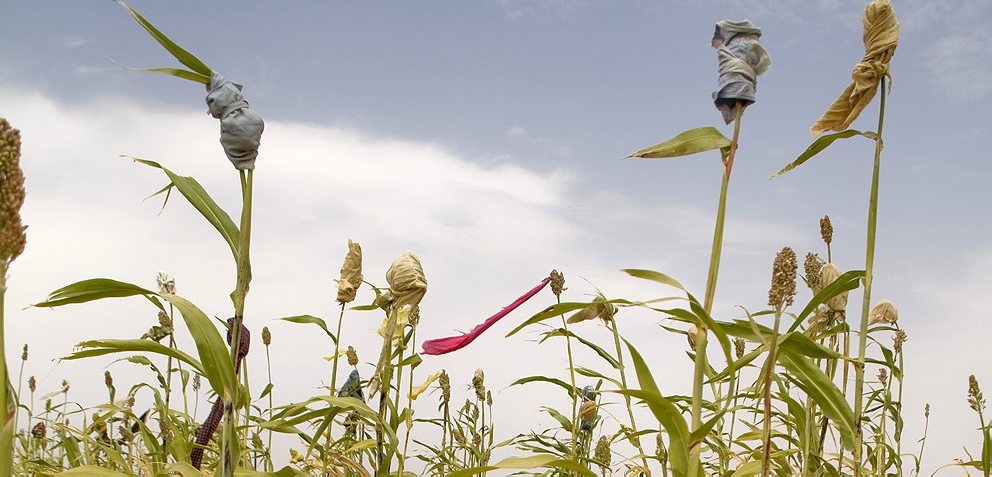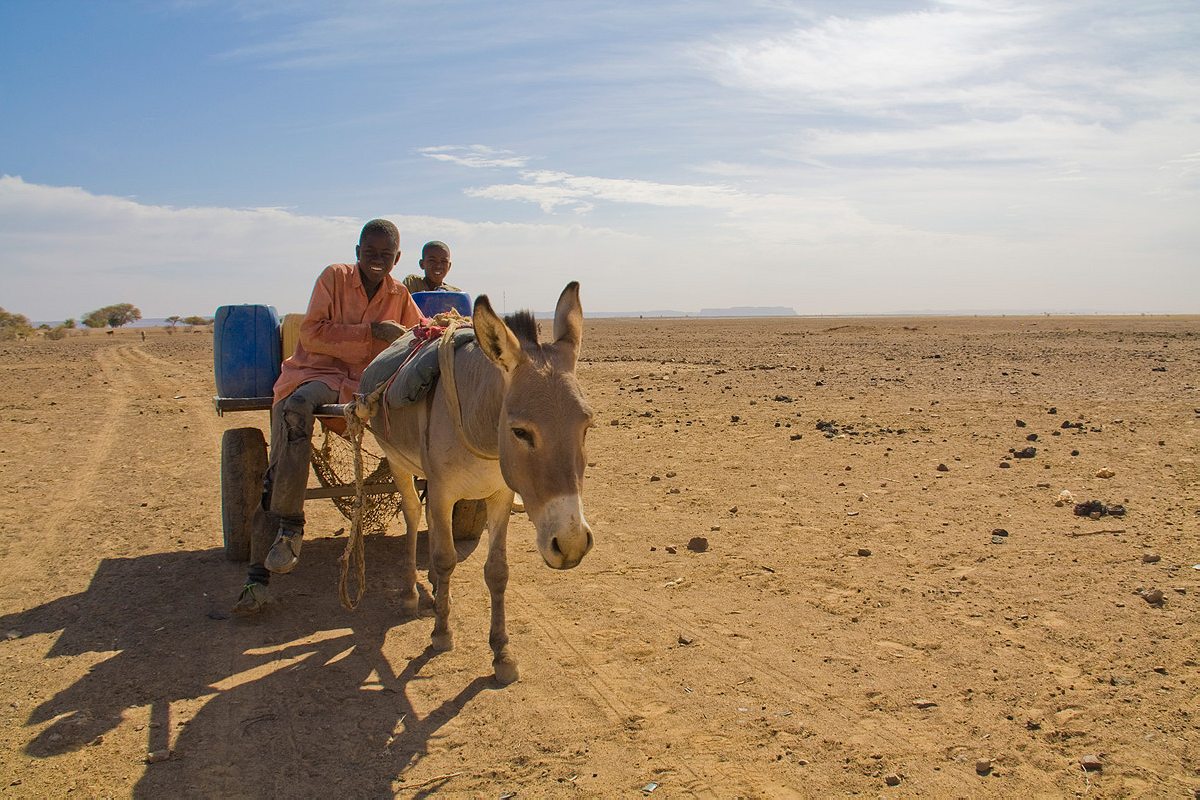Every morning, trudging to the field to fight off the birds. Survival in the Sahel.
Zeidan Ould Mohammed gets up with the first rays of sunlight. He wakes his wife and eight children, the youngest four, the eldest 25. Little later, the family is on its way to the communal millet field outside of Legraere, a small village more than 800 kilometres east of Mauritania’s capital Nouakchott.
As they walk across the parched landscape of sand and rocky soil, they soon encounter other farmers from their village. Everyone carries a small load of rather unusual equipment: bundles of cloth, sticks, old plastic bottles filled with small stones and rusty tin cans.
Those are the “weapons” they have brought to battle the enemy they will encounter this morning: flocks of hundreds of small, black birds that descend every day to their field to eat their millet.

Humans may imagine themselves exceptional animals, but when faced with a crisis of food—in this case a blazing drought that has lasted for ages—our dominion slips. All creatures suffer, and all fight for the same bits of protein.
This morning in Legraere, women and children shout, rattle bottles with stones and bang against tin cans, while the men build scarecrows and wrap pieces of fabric around each crop, in the hope the birds won’t be able to get to the grain.
This is the job, from dawn to dusk, with no break for lunch, no time for a drink of sweet mint tea. And yet, they are losing the battle.

Standing next to Mohammed, an old woman in a traditional, dark blue tunic almost accusingly holds a millet stalk up to the sky. “Not a granule left. The birds ate everything,” she says. “This is a disastrous year.”
And yet, it could be worse: the communal field is fortunate to have any harvest this year. The other farming grounds are rain-fed, the roughly 260 families who live in and around Legraere pooled their resources to dig a well for irrigation. So they have some crops; all the others have none.

Legraere lies deep in the Sahel zone, an arid strip of land that stretches across eight African countries—from Senegal in the west to Sudan in the east, crossing Mauritania, Mali, Nigeria, Niger, Burkina Faso and Cameroon. After a drought destroyed the majority of the harvest late last year, rural populations throughout the region started to run out of food since early February. That’s six months before the next rains are expected, if they fall, and eight months before the next harvest season. Twelve million people are threatened by hunger across the Sahel.
“Already now, we have nothing left to eat, just a few handfuls of rice, a bit of millet. It’s the same situation in every village,” laments Mohammed as he wraps a piece of old cloth around a millet stalk. “I have frail hope we will make it, Inshallah, God willing. If all fails, we must wait for death.”

Back in the village, grain stock manager Jeddou Ould Abdallahi looks helplessly at the few remaining sacks of cereal stacked against the whitewashed walls of the storage room. There is no way they will feed hundreds of people in surrounding villages until the next harvest in September. “We are on the brink of a famine. People’s health is diminishing quickly,” he sighs.
Because the Sahel is a region in permanent crisis, faced with recurring droughts and chronic food insecurity, resources are sparse and the population’s coping mechanisms quickly depleted, even in a good year. Since 2000, harvests have shrunk continuously due to lessening and unpredictable rainfall, says Abdallahi. The persistent lack of water makes it more and more difficult to survive.
In this, at least, man has precedence. They use the water for their own cooking and drinking, but there is none left over for the animals. Already, the country’s dried out pasturelands are lined with carcasses of cows and donkeys, the animals to die of thirst first. Sheep will soon follow, then goats and finally camels.

The signs of a full-blown famine, similar to the one in Somalia last year where 13 million people went hungry, are everywhere. In Mauritania, which has the least amount of potable water in the world, more and more people line up at the local clinics in search for help. The number of acutely malnourished children rises with every week. Food prices have tripled due to the drought, making it even more difficult for people to get by.
As the sun sets, Mohammed calls his children together. Exhausted and hungry, they start the long walk back to the village. There will be no dinner tonight, his wife says, apart from a handful of rice for everyone. And that’s already more than many others will eat. Still, the family is determined not to give up. “Tomorrow, we’ll battle the birds again,” Mohammed says.